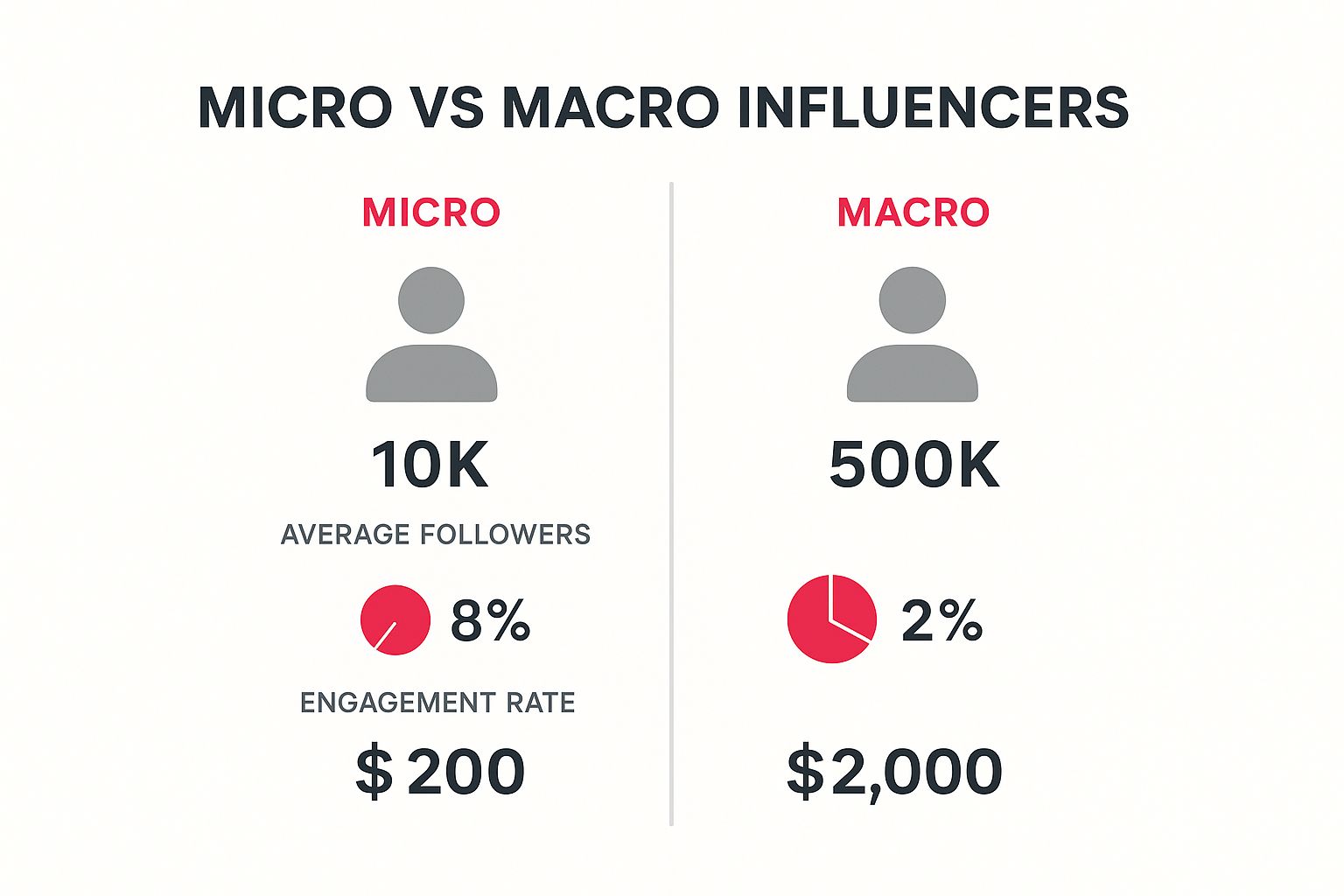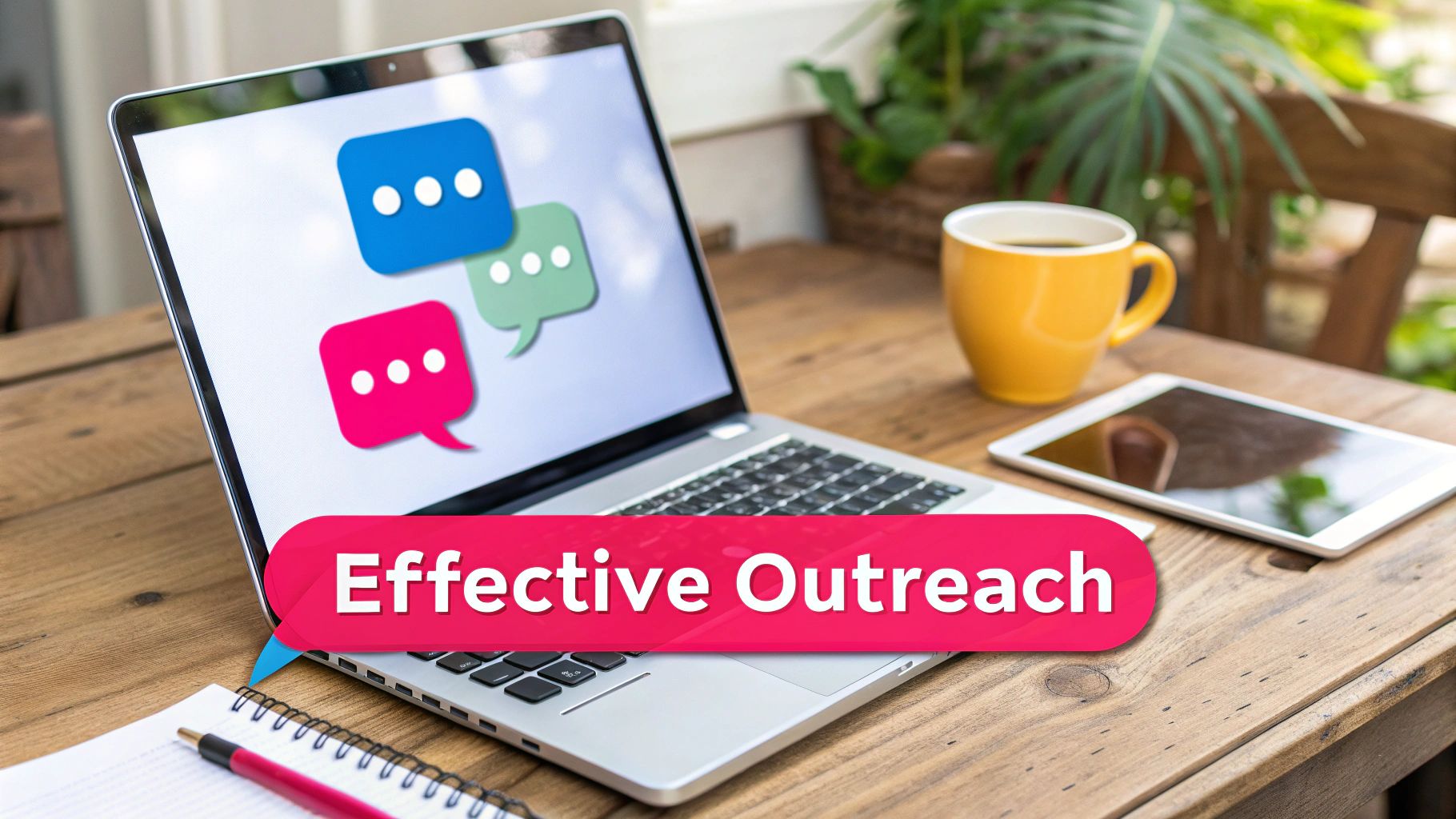 What Is Spark Ads A Guide to TikTok Advertising
What Is Spark Ads A Guide to TikTok Advertising
Table of Contents
The Evolution of Influencer Relationship Management

The era of single influencer posts is waning. Modern influencer marketing prioritizes long-term partnerships and strategic collaborations. This shift toward influencer relationship management (IRM) acknowledges the power of authentic connections over transactional exchanges. Imagine a brand consistently working with the same influencer. Trust builds with the influencer and their audience, resulting in more genuine endorsements and increased engagement.
This evolution stems from the growing complexity of managing numerous creators across various platforms. Brands now juggle dozens, sometimes hundreds, of partnerships at once. This demands a more structured and strategic approach. As influencer marketing matures, brands recognize that lasting relationships yield a higher return on investment. Building rapport, understanding individual influencer needs, and fostering mutual growth are now essential for continued success.
The Rise of Relationship-Focused Teams
Progressive companies are restructuring their teams to focus on creator relationships. Dedicated influencer relationship managers are becoming commonplace. These professionals concentrate on cultivating and nurturing connections, acting as bridges between the brand and its influencer partners. This signifies a departure from purely campaign-driven strategies, emphasizing continuous engagement. Maintaining consistent communication and providing value beyond individual campaigns cultivates loyalty and deeper collaboration.
This focus on relationship-building isn't just a fleeting trend; it's a response to the changing influencer marketing landscape. Influencer relationship management is increasingly critical as the industry expands. Influencer marketing is expected to reach a global market size of $32.55 billion by 2025. Moreover, 47% of experts now prioritize long-term influencer partnerships. This highlights the growing recognition of the value in building consistent and meaningful connections with influencers over time. The rise of nano-influencers, comprising 75.9% of Instagram's influencer base in 2024, is noteworthy. Understanding their unique needs and potential is vital for effective IRM. Find more detailed statistics here. Effective influencer relationship management has become a key factor in achieving sustained success within the dynamic influencer marketing world.
Crafting Your Influencer Relationship Blueprint
Beyond superficial engagement metrics lies the real power of influencer relationship management (IRM): turning creators into loyal brand advocates. This involves aligning influencer partnerships with your overall marketing goals, creating collaborations where everyone benefits. It's like tending a garden – consistent care and attention produce the most beautiful flowers. Similarly, nurturing influencer relationships cultivates authentic endorsements and lasting growth.
From Transactional to Transformative: Building Authentic Partnerships
Effective IRM transcends one-off campaigns. It prioritizes building genuine connections with influencers. This involves personalized outreach that speaks to each creator's individual brand and values. Imagine receiving a generic email versus one clearly showing the sender understands your work and shares your vision. Which one are you more likely to answer? This personalized touch is crucial for standing out in a crowded inbox.
Maintaining open and consistent communication is essential. This includes setting a regular communication schedule, such as weekly check-ins or monthly brainstorming sessions. It also means offering value beyond just money, such as exclusive product previews, early access to campaigns, or joint content creation opportunities.
Structuring for Success: Templates and Strategies for Long-Term Growth
Practical tools, like templates for initial conversations and partnership proposals, are key to building a strong foundation. These templates provide structure while still allowing for flexibility and personalization. They can also help ensure all the important information is communicated clearly from the beginning. A well-structured proposal, for instance, should outline campaign objectives, deliverables, timelines, and payment, eliminating any chance of misunderstanding.
Balancing structure with creative freedom is vital. While clear guidelines and expectations are important, influencers also need the freedom to create authentic content that connects with their audience. Think of it like giving a chef high-quality ingredients but allowing them the freedom to create their own culinary masterpiece. This balance empowers influencers to do their best work while staying true to the brand's message.
The following infographic illustrates key differences between micro and macro influencers based on their average followers, engagement rate, and cost per post.

As the infographic shows, while macro-influencers have larger follower counts, micro-influencers have higher engagement rates at a much lower cost. This highlights the importance of looking beyond follower count when choosing influencer partners. A strategic IRM approach often involves a mix of both, using the broad reach of macro-influencers and the focused engagement of micro-influencers.
Building Bridges: Aligning Brand Objectives with Influencer Expertise
Successful influencer relationship management means integrating influencer partnerships with your overall marketing strategies. This means seeing influencers not just as content creators, but as strategic partners who can offer valuable insights and expertise. For example, including influencers in product development or marketing brainstorms can lead to fresh ideas and more effective campaigns.
To further this idea, let's explore the key components of a successful influencer relationship strategy. The following table provides an overview of these components, their implementation, and the benefits they offer to both brands and influencers.
Influencer Relationship Strategy Components
| Strategy Component | Implementation Approach | Benefits to Brand | Benefits to Influencer |
|---|---|---|---|
| Personalized Outreach | Research influencers, tailor communication to their interests and values. | Increased response rates, stronger initial connection. | Feeling valued and understood, increased likelihood of collaboration. |
| Regular Communication | Establish a consistent communication schedule (e.g., weekly check-ins). | Stay informed on campaign progress, build stronger relationships. | Clear expectations, opportunity for feedback and support. |
| Value-Based Incentives | Offer beyond monetary compensation (e.g., exclusive access, collaborative projects). | Increased influencer loyalty, more impactful campaigns. | Enhanced brand reputation, professional growth opportunities. |
| Strategic Integration | Involve influencers in product development, marketing strategy discussions. | Fresh perspectives, innovative campaign ideas. | Increased influence and visibility, valuable learning experience. |
This table summarizes the core elements of a robust IRM strategy. By focusing on these components, brands can cultivate meaningful relationships with influencers, leading to more authentic and effective marketing campaigns.
Furthermore, developing a value-exchange model that goes beyond simple payment is crucial. This might include giving influencers opportunities for professional growth, access to exclusive events, or collaborative projects that strengthen their own brand. By investing in the influencer's success, brands build stronger relationships and more impactful partnerships. This mutually beneficial approach reinforces the connection and encourages long-term collaboration. This strategic approach to IRM transforms influencers from paid promoters into true brand advocates, driving authentic engagement and measurable results.
Finding Partners Worth Long-Term Investment

Not all influencers are the same, especially when building lasting partnerships. A large follower count can be attractive, but it doesn't guarantee a successful collaboration. This section explores identifying influencers with real relationship potential, looking beyond superficial metrics to find true value. This means learning to spot the right influencers and recognizing potential problems.
Evaluating Beyond Follower Count: A Framework for Assessment
Effective influencer relationship management (IRM) needs a solid evaluation framework. Start by checking the authenticity of the influencer's audience connection. Do their followers truly engage with their content? Are the comments and interactions meaningful, or do they seem superficial? This qualitative analysis shows the influencer's real impact.
Content quality consistency is also key. A consistent brand voice, aesthetic, and messaging show professionalism and build audience trust. Think of choosing a restaurant – you're more likely to return to one that consistently serves great food. Likewise, consistent content shows an influencer's dedication to their work and their audience.
Look for signs of professional reliability, too. Do they respond to communication quickly? Do they meet deadlines and keep their promises? These small details can significantly affect campaign execution and the overall partnership. Successful long-term partnerships need mutual respect, reliability, and open communication.
Ensuring high engagement rates is crucial for influencer relationship management. Micro-influencers often have the highest engagement, making them attractive to brands. In 2025, brands are seeing strong returns, averaging $4.12 for every $1 spent on Instagram influencer campaigns. This shows that effective relationship management leads to financial gains. Integrating AI into campaign management has also improved outcomes for 66.4% of marketers, highlighting technology's importance in optimizing these partnerships. Explore this topic further.
Recognizing Red Flags: Protecting Your Brand and Resources
Recognizing potential issues is just as vital as finding the right partners. An influencer with past controversies, inconsistent messaging, or a lack of transparency could harm your brand. Thorough research is crucial before any partnership.
A good vetting process respects creators' time while safeguarding your brand. Request references, review past campaigns, and clearly state your expectations upfront. Keep the process efficient and transparent, valuing the influencer's time while ensuring they align with your brand.
Building a Diverse Influencer Portfolio: Balancing Tiers and Relationships
A strong influencer portfolio needs diversity across tiers. This could involve working with nano-influencers for specialized knowledge, micro-influencers for focused engagement, and macro-influencers for wider reach. Each tier offers unique advantages and contributes to a comprehensive marketing plan.
Balancing new relationships with nurturing existing ones is vital for maximizing impact. Dedicate resources to both outreach and ongoing relationship management. Like any relationship, influencer partnerships need effort and care. Investing in these connections helps brands build a loyal network of advocates who genuinely support their products and values.
Tech Tools That Strengthen Creator Relationships
Managing countless influencer relationships with outdated methods like spreadsheets and endless email chains isn't just inefficient, it's a recipe for burnout. This is where influencer relationship management (IRM) platforms come into play. Smart brands are using technology to scale their IRM strategies while maintaining that all-important personal touch. It's like trading in a bicycle for a car: you reach your destination (stronger relationships) much faster and more smoothly.
Streamlining Influencer Relationship Management With Tech
These platforms provide a central hub for communication, campaign tracking, and performance analysis. This streamlined process frees up valuable time, allowing relationship managers to focus on building authentic connections instead of drowning in administrative work. Automated reporting, for instance, provides quick access to key performance indicators (KPIs), eliminating manual data crunching. Plus, integrated communication tools ensure consistent and organized messaging.
This central hub also promotes transparency and accountability. With all communication and campaign details readily available, it's simpler to monitor progress, spot potential problems, and ensure everyone is on the same page. This shared visibility strengthens brand-influencer collaboration, leading to seamless campaign execution and improved results.
Choosing The Right Platform For Your Needs
Not all IRM platforms are the same. When evaluating options, consider your specific needs and goals. Some platforms specialize in influencer discovery, while others prioritize relationship management features like communication and campaign tracking. Some cater to specific social media channels, while others offer a more comprehensive multi-platform approach.
Also, consider factors like pricing, integration with other marketing tools, and customer support. Choosing a platform that fits your budget, current tech stack, and support needs is critical. Just like a carpenter selects the right tools for a job, choosing the right IRM platform is essential for achieving your influencer marketing objectives.
To improve communication and collaboration, think about incorporating remote work tools, which can further strengthen these relationships.
Leveraging AI and Automation For Enhanced Efficiency
Many IRM platforms now utilize AI and automation for routine tasks like influencer identification, outreach, and even some aspects of campaign management. This not only saves time but also allows for more personalized and effective outreach. AI-powered tools can analyze large datasets to pinpoint the most relevant influencers for a given campaign, ensuring focused and productive outreach efforts.
Maintaining Authenticity in a Tech-Driven World
It's crucial to remember that authenticity is still king in influencer relationship management. While technology streamlines processes, it shouldn't replace genuine human connection. Think of these tools as helpful assistants, not replacements. They free up your time to focus on the personal interactions that truly solidify partnerships.
Let's look at a comparison of a few popular platforms:
To help you navigate the selection process, the following table compares some leading influencer relationship management platforms:
Influencer Management Platform Comparison
This table compares leading influencer relationship management platforms across key features, pricing models, and ideal use cases.
| Platform | Relationship Management Features | Discovery Capabilities | Analytics Offered | Best For | Pricing Model |
|---|---|---|---|---|---|
| Upfluence | Influencer CRM, Campaign Management, Collaboration Tools | Influencer Search, Audience Analysis | Campaign Performance, Influencer Performance | Mid-size to large businesses | Subscription-based |
| Grin | Influencer Relationship Management, Content Planning & Publishing | Influencer Search & Discovery, Audience Demographics | Campaign Reporting, ROI Tracking | E-commerce businesses | Subscription-based |
| AspireIQ | Relationship Management, Campaign Management, Product Seeding | Influencer Discovery, Audience Insights | Campaign Performance, Engagement Analysis | Brands & agencies | Subscription-based |
This table highlights some of the key differences and similarities between popular IRM platforms. It’s important to conduct your own research to find the platform that best aligns with your unique needs and budget.
Maximizing ROI With Tech-Driven Influencer Relationship Management
By strategically selecting and using the right IRM tools, brands can scale their influencer programs, boost efficiency, and cultivate stronger relationships with their influencer partners. This tech-driven strategy not only maximizes return on investment (ROI) but also empowers more strategic, data-informed decision-making.
Building Authentic Connections That Last

What distinguishes a short-lived influencer campaign from a lasting, successful partnership? The key lies in authentic connections. It's about going beyond simple transactions and nurturing genuine relationships that influencers truly value. Think of it as the difference between hiring someone for a one-time gig versus building a mutually beneficial alliance. This section explores the everyday practices that turn ordinary business interactions into authentic, enduring partnerships.
Personalization: The Foundation of Authentic Influencer Relationships
True personalization is more than just using an influencer's name in an email. It's about understanding their content, audience, and core values. Referencing a recent post or acknowledging their specific niche shows genuine interest and respect. This personalized approach demonstrates that you value them as individuals, not just marketing channels. This fosters rapport and mutual respect, the building blocks of any strong working relationship.
To enhance communication and collaboration, consider using specific remote work tools. These tools can facilitate efficient communication and project management, leaving more time for meaningful interactions.
Providing Constructive Feedback and Adding Value
Feedback is essential for any successful collaboration. However, offering constructive feedback is a skill. Frame suggestions as opportunities for growth, highlighting the positives while offering specific, actionable advice. This supportive approach strengthens the relationship and empowers influencers to improve their work.
Beyond feedback, show your investment in the influencer's success by providing value-added opportunities. This could include early access to new products, invitations to exclusive events, or collaborations on bigger projects. These actions showcase your commitment to their growth, fortifying the partnership beyond individual campaigns.
Maintaining Engagement Beyond Campaigns: The Key to Long-Term Success
Effective influencer relationship management (IRM) requires ongoing engagement, not just communication during active campaigns. Consistent check-ins, even during downtime, show your commitment to the relationship. Consider establishing "relationship rituals," such as monthly virtual coffee chats or quarterly brainstorming sessions. These regular interactions keep the connection strong and nurture the partnership beyond single projects.
Navigating Conflict and Building Stronger Bonds
Disagreements are a natural part of any relationship. Addressing conflicts promptly and respectfully is vital for a healthy partnership. Open communication and a willingness to compromise are essential. By tackling challenges directly, you demonstrate your dedication to the relationship and create a stronger foundation for future collaborations. This proactive approach minimizes potential harm and reinforces trust.
Real-World Examples and Practical Applications
Many brands have seen significant improvements in their influencer marketing by prioritizing relationships. Some brands offer ongoing mentorship programs to their influencer partners, providing valuable professional development. Others create exclusive communities for their influencers, fostering a sense of belonging and shared purpose. These initiatives demonstrate a genuine investment in the influencer's success, resulting in stronger, more authentic partnerships and, ultimately, more effective campaigns. By focusing on these relationship-building practices, brands can cultivate a network of loyal advocates who genuinely believe in their products and values.
Measuring What Matters in Influencer Relationships
Likes and shares are common metrics for gauging influencer campaign success. But let's be honest, they only scratch the surface. To truly grasp the strength of your influencer connections, you need a deeper dive. Smart brands are looking beyond these basic numbers. They're building relationship health indicators that provide a forward-looking view of performance and guide program enhancements. This leads to more strategic choices and resource allocation, getting the most out of influencer marketing.
Quantifying Relationship Quality: Frameworks for Assessment
Just like businesses track customer happiness, understanding influencer relationships is vital for long-term wins. This means creating frameworks that measure the elements often missed by typical metrics. These frameworks might include factors like how often you communicate, responsiveness, mutual respect, and aligned values. Think of it like a company checking in on employee satisfaction. Happy employees are productive employees. The same applies to influencers – satisfied influencers create better content and become true champions for your brand.
Gathering Meaningful Feedback: Understanding the Influencer Perspective
Getting feedback directly from influencers gives you a goldmine of information. It reveals their experience and highlights areas to improve within your influencer relationship management (IRM) program. Surveys, individual chats, or focus groups can all achieve this. The key is to create a space where influencers feel safe sharing their honest thoughts, good and bad. This feedback loop lets brands fine-tune their strategy and build stronger, mutually beneficial collaborations.
Early Warning Systems: Identifying and Addressing Potential Issues
Early warning systems help brands catch potential problems before they snowball and affect content or campaign results. These systems could monitor shifts in communication, analyze the sentiment of influencer feedback, or identify performance dips in joint projects. Think of it like the warning lights on your car's dashboard – they alert you to a potential issue before it becomes a major breakdown. These systems let brands proactively handle issues and nurture healthy influencer relationships.
Connecting Relationships to Business Outcomes: Demonstrating the Value of IRM
Effective IRM programs show the real-world impact of strong influencer relationships on business goals. This goes beyond engagement numbers, connecting relationship quality to measurable results:
- Reduced content costs: Solid relationships often result in more efficient content creation and better negotiation results.
- Faster production timelines: Open communication and shared understanding streamline the process, speeding up content development and campaign rollouts.
- Improved campaign performance: Authentic endorsements from influencers truly connect with audiences, leading to more engagement and conversions.
- Enhanced brand perception: Genuine partnerships create trust and credibility, shaping positive consumer views of your brand.
These clear business advantages highlight the importance of prioritizing influencer relationship management.
Through these comprehensive measurement methods, it’s evident why relationship-focused programs consistently outshine transaction-based approaches. By emphasizing authentic connections and shared growth, brands unleash the full potential of influencer marketing. They build lasting value that goes well beyond individual campaigns.
Ready to revamp your influencer marketing and build lasting creator partnerships? JoinBrands offers a comprehensive platform to streamline your influencer relationship management, from discovery and outreach to campaign execution and performance analysis. Discover the power of JoinBrands today!








